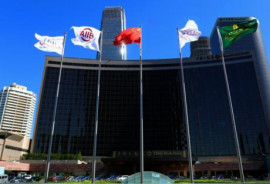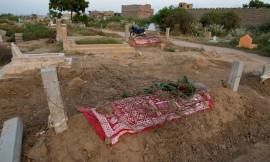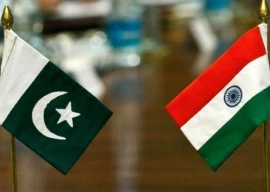
Wetlands for a sustainable urban future is the theme for World Wetlands Day being observed on February 2nd across the world. Urban wetlands make cities liveable in many important ways. They reduce flooding, replenish drinking water, filter waste, provide urban green spaces and are a source of livelihood. These wetlands’ benefits grow ever more crucial as the number of people living in cities has now passed the four billion mark and continues to rise. By 2050, 66 per cent of humans will live in cities, as people move into urban areas searching for better jobs. Unfortunately, most people are unaware of the value and importance of urban wetlands.
In fast growing cities, wetlands are often viewed as a wasteland, places to dump rubbish, fill in or convert to other uses. Scientists estimate that at least 64 per cent of the world’s wetlands have disappeared since 1900, while in parallel, cities have exploded in growth. The theme of the World Wetlands Day 2018 aims to raise awareness about how urban wetlands contribute to the future of sustainable cities. Urban wetlands provide multiple benefits such as flood control, water supply, waste treatment, green space and livelihoods. Urban wetlands should be integrated into a city’s sustainable future planning and development and not be viewed as wastelands. Cities should adopt policies and actions which help conserve and promote urban wetlands.
The future of humanity depends on wetlands. This ecosystem provides and purifies our water, while replenishing the groundwater. It also provides the rice and fish that feed billions of people, acts as a natural sponge for protection against flooding and drought, ensures coastal protection as sea levels rise, and helps fight climate change. In some regions, notably Asia, the loss of wetlands is even higher than 64 per cent. This rapid decline means that access to fresh water is eroding for one to two billion people worldwide, while flood control, carbon storage and traditional wetland livelihoods all suffer. Biodiversity has also been affected. Populations of freshwater species have declined by 76 per cent between 1970 and 2010 according to World Wildlife Fund’s Living Planet Index. The main causes of wetlands’ loss and degradation are major changes in land-use, especially an increase in agriculture and grazing, air and water pollution and excess nutrients, water diversion through dams, dykes and canalisation.
Pakistan is endowed with hundreds of sweet-water and coastal wetlands. Unfortunately, due to mismanagement and misplaced priorities, the wetlands face multiple challenges. Continued release of poisonous water from industrial and urban areas has ruined the once healthy wetlands scattered in various parts of the country and particularly in Sindh. Loss of water quality from pollution from domestic and industrial waste is significant around all major cities in lakes such as Keenjhar, Manchhar and along the coast. Agricultural run-off, salinisation and eutrophication of wetlands are key challenges.
Manchhar Lake was once considered the largest freshwater natural wetland in Asia. It is located in the eastern foothills of the Khirthar Range, about 18km west of Sehwan, and is spread over an area of 200 square km. The lake was once renowned for its beauty and the large populations of migratory birds and wild fowl. It was also a rich source of fisheries and provided livelihood to more than 10,000 households of fisherfolk living on 2,000 residential boats. But today it stands as a severely threatened wetland, dying from pollution, toxic effluents and mismanagement. The Keenjhar Lake, a wildlife sanctuary in Thatta district, is not only a major source of water supply to Karachi but once used to be the habitat of local and migratory birds. Because of its proximity with the metropolis this water reservoir also carries a lot of tourist attractions. However, it is no better than other wetlands of the province anymore because the source of its fresh water supply, Kalri Beghar Canal, passes through the Kotri industrial area where most of the industrial waste is drained.
The biggest issue related to water availability is the ever-growing demand for water throughout the country for domestic supply to the expanding cities, for industry and especially for agriculture. There is already a severe water shortage in the country, due to over extraction of water for agriculture, leading to saline intrusion in the delta. In Sindh, wetlands are increasingly drying up and becoming more water depleted, which reflects the impact of water demand upon wetlands. The lack of awareness of decision-makers and resource managers, lack of coordination among organisations responsible for wetlands, conflicting and duplicated mandates for management, lack of institutional capacity for enforcement, technical management along with the lack of financial resource make wetlands management more complex in the country. Hence, a paradigm shift is required to manage wetlands sustainably.
Published in The Express Tribune, February 1st, 2018.
Like Opinion & Editorial on Facebook, follow @ETOpEd on Twitter to receive all updates on all our daily pieces.


















































COMMENTS
Comments are moderated and generally will be posted if they are on-topic and not abusive.
For more information, please see our Comments FAQ